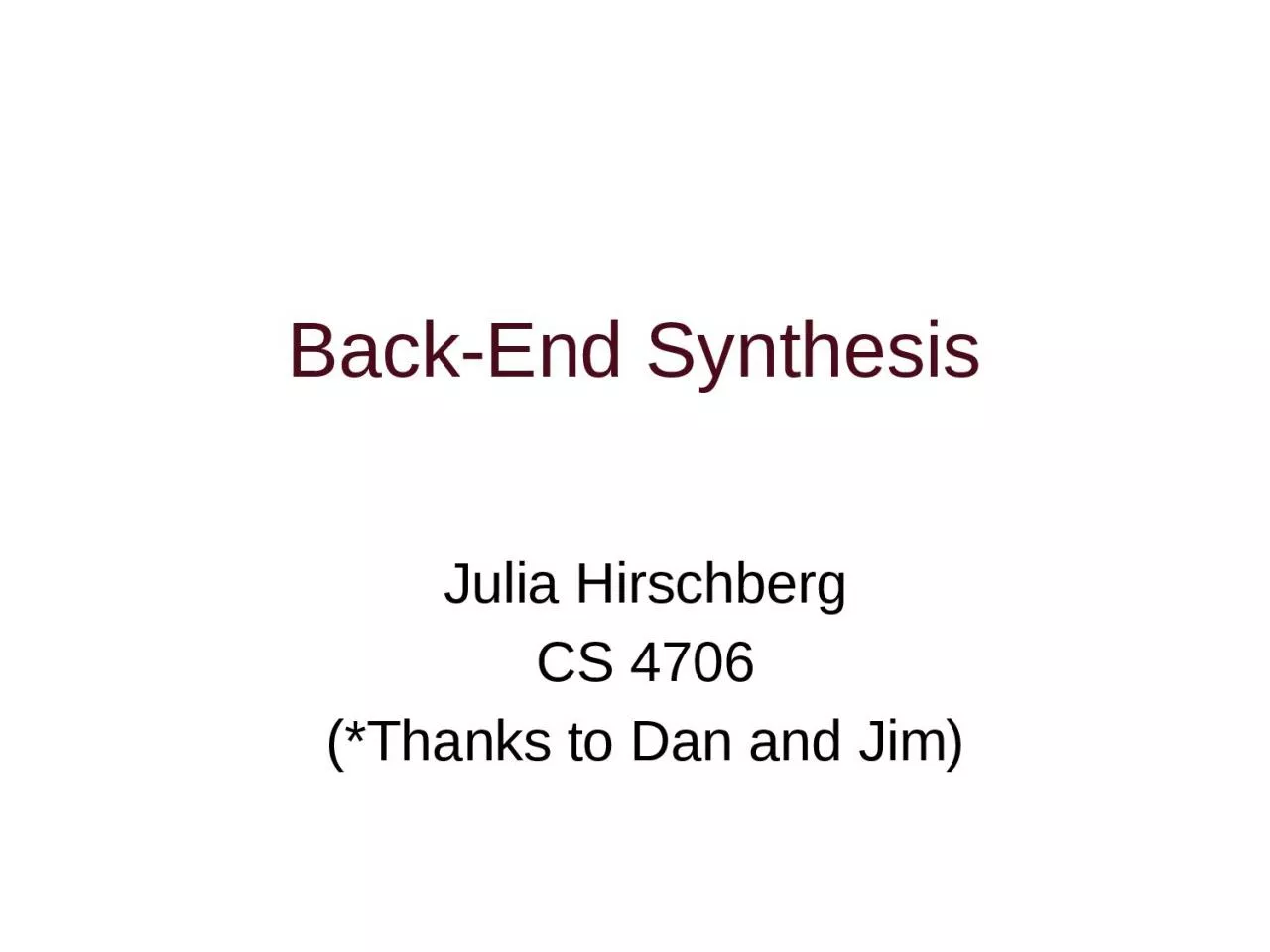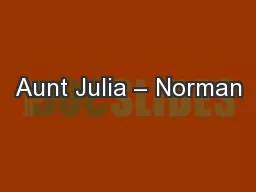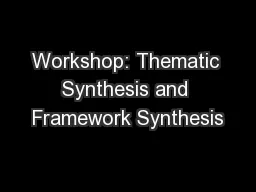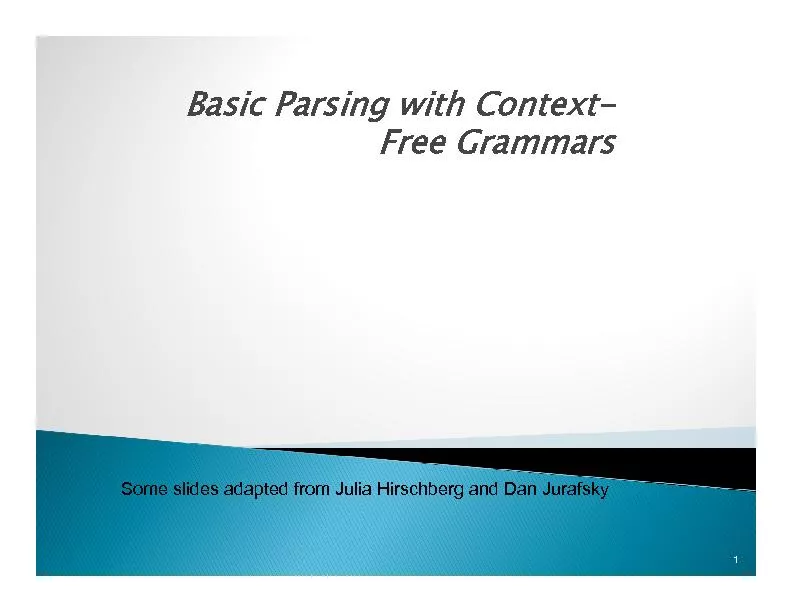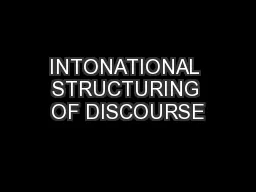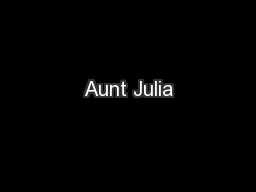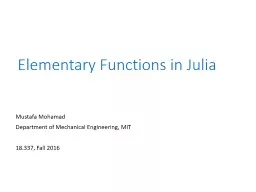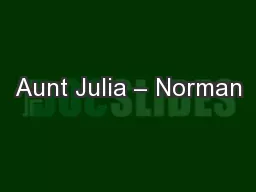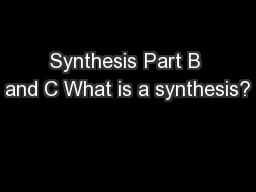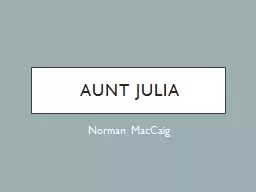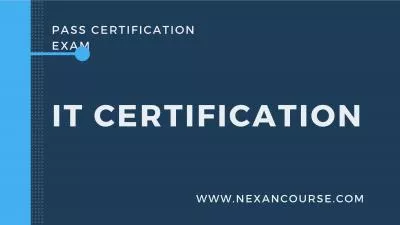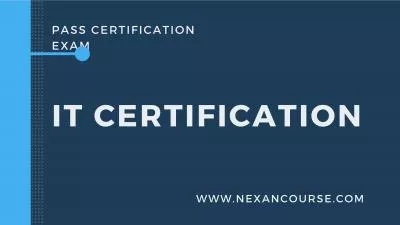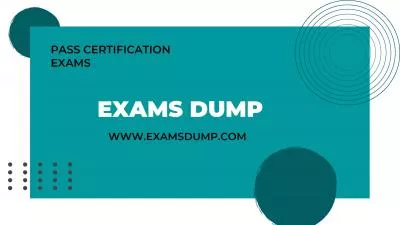PPT-Back-End Synthesis Julia Hirschberg
Author : reese | Published Date : 2023-11-11
CS 4706 Thanks to Dan and Jim Architectures of Modern Synthesis Articulatory Synthesis Model movements of articulators and acoustics of vocal tract Formant Synthesis
Presentation Embed Code
Download Presentation
Download Presentation The PPT/PDF document "Back-End Synthesis Julia Hirschberg" is the property of its rightful owner. Permission is granted to download and print the materials on this website for personal, non-commercial use only, and to display it on your personal computer provided you do not modify the materials and that you retain all copyright notices contained in the materials. By downloading content from our website, you accept the terms of this agreement.
Back-End Synthesis Julia Hirschberg: Transcript
Download Rules Of Document
"Back-End Synthesis Julia Hirschberg"The content belongs to its owner. You may download and print it for personal use, without modification, and keep all copyright notices. By downloading, you agree to these terms.
Related Documents

